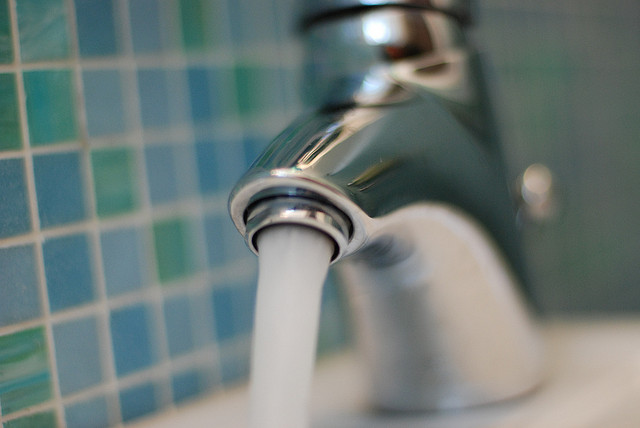Water usage in your family’s home can be quite variable and is affected by many factors including the number of adults and children living in your home, the age of your children, your home’s size as well as the number of bathrooms. It is often difficult to measure water usage since the amount of water used for cooking, bathing, showering and cleaning varies in every home and depends on the water fixtures and appliances installed in your home. For example, we all know that teenagers tend to take longer showers and newborn babies create a lot of laundry! However, information from a number of reliable sources estimates that a family of four typically uses from about 150 gallons per day all the way up to 400 gallons per day! Several studies have shown that the average indoor water use in the U.S. is about 50 gallons per person per day.

With all this variability, how do you properly size a water filtration, softening or conditioning system for your home? Actually, it’s not just how much water you use on a daily basis, but more importantly it’s how and when you are using your water that dictates appropriate system size. Let me explain. Daily activity and habits determine your water usage, often expressed as peak and service flow rates. Peak flow rates are just that. If you turned on every faucet in your home at once and measured how much water you were using, you would know the peak flow rate available for your home. However, since this is not how we normally use water on a daily basis, whole house water systems are sized based on what we call our service flow rate. Service flow rate is the amount of water being continuously used over a 10 minute period. A properly sized system will provide you with plenty of safe, clean water for washing, bathing, showering, cooking and doing your laundry.

The reason service flow rate is important is because all water systems, whether they are filters, softeners or conditioners, are rated for a certain flow rate to provide sufficient contact time with the media (which is how contaminants are effectively removed), allowing the system to do its work and operate at the maximum efficiency. For example, your water filtration system needs time to remove particulates and contaminants or adsorb chemicals and your water conditioner needs time to reduce the effects of water hardness.
So, to properly size your whole house water system you need to calculate the estimated service flow rate in your home. First, determine which water fixtures and appliances may be running for more than 10 minutes at the same time. This may be early in the morning when your family is getting ready for work or school, or later in the day when your dishwasher and washing machine are running. Next, using the table below, determine how many gallons per minute each device may be using. Finally, add up all the flow rates for the devices you have selected. This is your estimated service flow rate. For example, if one family member is taking a shower, another filling a bathtub while the bathroom sink is also being used, your estimated service flow rate would be about 9 gallons per minute. Likewise, if  you are using your kitchen sink while your dishwasher and washing machine are running, your service flow rate would be about 8.5 gallons per minute.
you are using your kitchen sink while your dishwasher and washing machine are running, your service flow rate would be about 8.5 gallons per minute.
Water Fixture or Appliance |
Flow Rate (Gallons per Minute) |
|
Faucets |
2.5 – 3.0 |
|
Toilets |
2.2 – 5.0 |
|
Bathtubs |
4.0 – 8.0 |
|
Shower |
2.5 – 5.0 |
|
Dishwasher |
2.0 – 3.0 |
|
Washing Machine |
4.0 – 5.0 |
Service flow rates for a family of four generally fall between 8 and 12 gallons per minute and can go much higher with larger families or higher water use. Use your service flow rate to select your Whole House Water Filtration System or Whole House Water Conditioning System by going to our Specifications Tab for each product to match up your service flow rate with the properly sized system. Please know that these whole house water systems do not restrict the flow of water into your home and are still highly effective at higher flow rates experienced during periods of peak demand.
We are here to assist in selecting the optimal system for you and your family.
